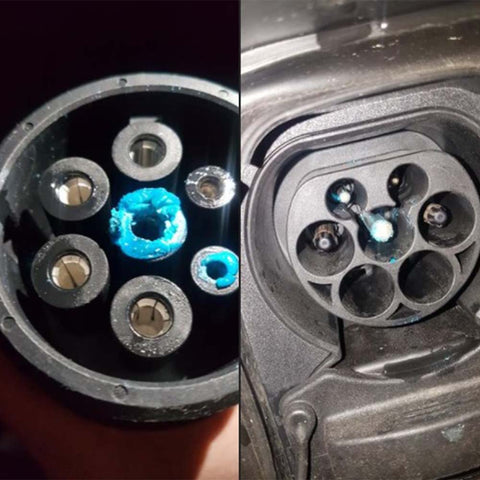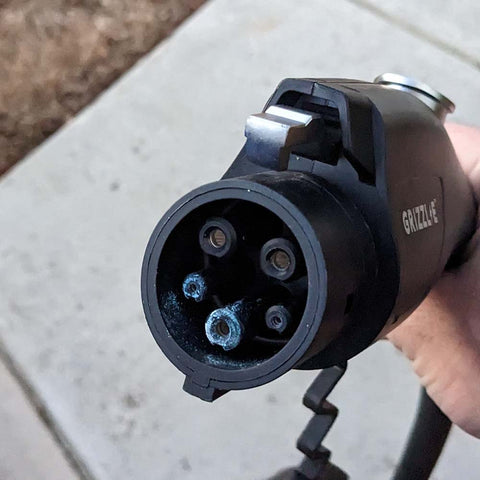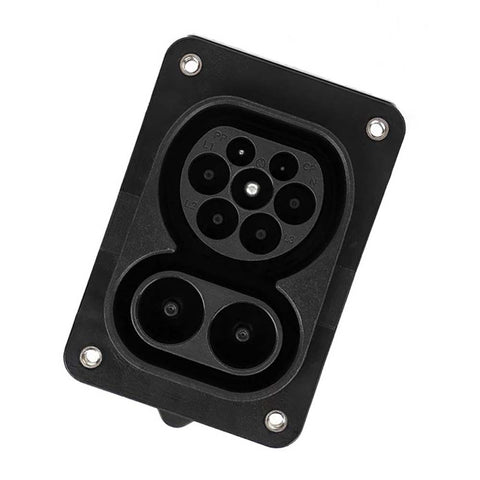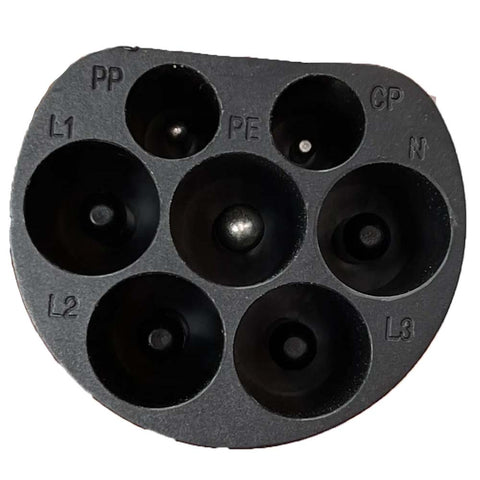Charging guide: Everything you need to know about charging cables
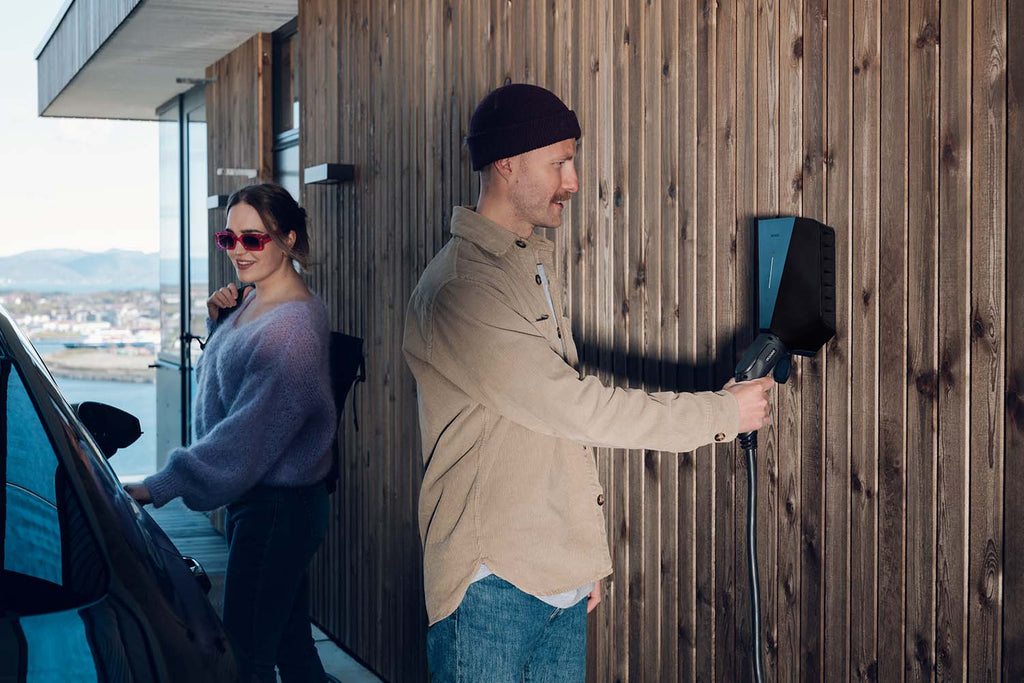
Frequently asked questions about charging cables
- Can the charging cable be hanging out?
- The charging cable is stuck in the car. What am I doing?
- The charging cable is stuck in the charging box. What am I doing?
- Should I connect the charging cable to the car or the charging box first?
- How long can the charging cable be used?
- Should I dry the charging inlet in the car?
- Is there a fixed charging cable at all charging stations?
- Should the pin on the plug or in the car be shorter than the others?
- Is it possible to connect two charging cables together?
- Is it possible to overload a charging cable?
- Can I use a 1-phase charging cable on a 3-phase charging box?
- Is there something I should think about before buying a charging cable?
- Is there a difference in charging cables?
Can the charging cable be hanging out?
Yes, it works perfectly as long as you make sure that the plug is not left in water, or with the lid / cap on. The reason is that many people leave the plug, for example, hanging over a railing with the lid on. Such a lid is not waterproof, and you run the risk of the lid filling up with water. In winter this will freeze and expand and destroy the plug / pins. Alternatively, if the plug (pins) lie in water for a short while, this could lead to galvanic corrosion on the CP pin. The pictures below show such corrosion and could destroy the plug. It may be possible to have these cleaned, but not always.
|
Galvanic corrosion on the type 2 plug and charging inlet on the car. |
Galvanic corrosion on a type 1 plug against the car |
How can I avoid this?
The best solution for storing the charging cable outdoors is in an angled type 2 or type 1 plug holder. Even better in combination with a cable suspension as pictured below.

The charging cable is stuck in the car. What am I doing?
- Push the plug firmly back into the car.
- Then lock the car (double-click the lock button)
- Wait 5 seconds, then double-click the open button on the key. Now try to remove the plug from the car.
- If this does not help, you can try pushing the plug into the car and try again.
- If this does not work, most cars have a manual solution that you can find in the car's user manual (emergency solution).
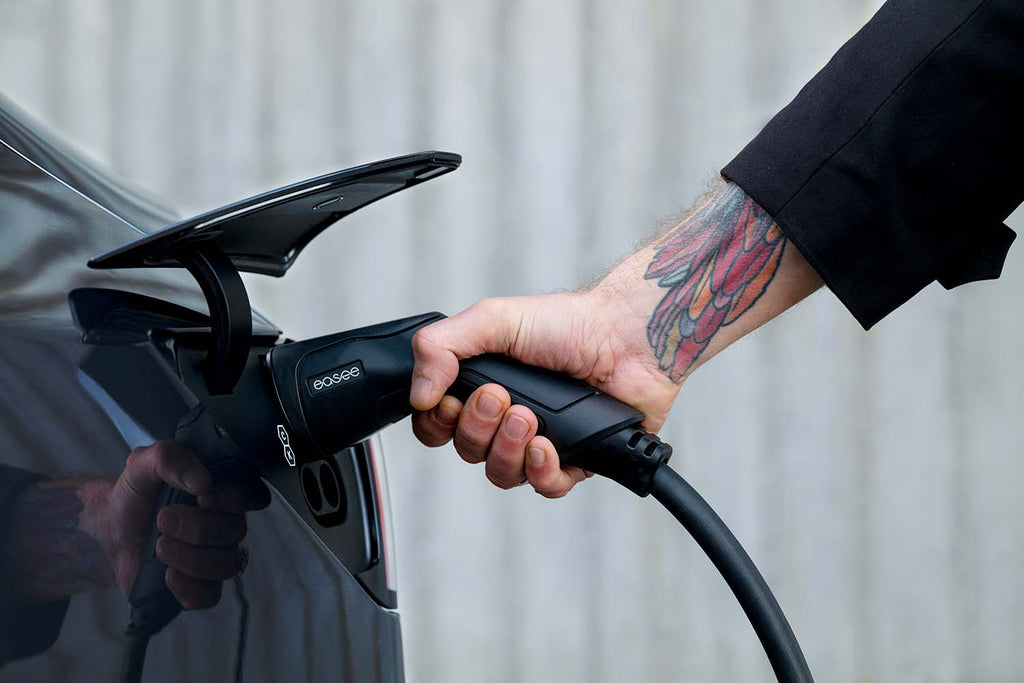
The charging cable is stuck in the charging box. What am I doing?
- Push the plug firmly into the charging box.
- Use the charging box application to unlock the stuck plug.
- If your charging box does not have an app, then connect the charging cable in the car, and then end the charging in the car again (by double-clicking the open button on the key).
- Pull the plug out of the charging box. If it is still stuck, it is important to ensure that you have not overridden the locking so that the plug is always locked to the charging box. If necessary, try steps 1+3 again. Normally, the charging box releases the plug when you disconnect the plug from the car.

Should I connect the charging cable to the car or the charging box first?
When connecting to charge the car, the order is unimportant. But to disconnect after charging, you must always end charging via the car. Then first disconnect it from the car, and finally disconnect the charging box. The reason for the disconnection sequence is that the plug is locked at both ends during charging from a charging box. When the charging cable is disconnected from the car first, the charging box will release from the plug.

How long can the charging cable be used?
There is a limit to how long a charging cable can be due to the signal (communication) between the car and the charging station. Our experience is that 25 meters works fine.
Should I dry the charging inlet in the car?
All contact surfaces should be kept clean and relatively dry. It is recommended that covers are used and that it is dried with plenty of water. A little moisture is not dangerous. If there is a lot of snow and/or ice, this can be melted with a hairdryer, a bag of hot water that you hold close to you. Heat gun must be used carefully as it can quickly melt the charging connector in the car.
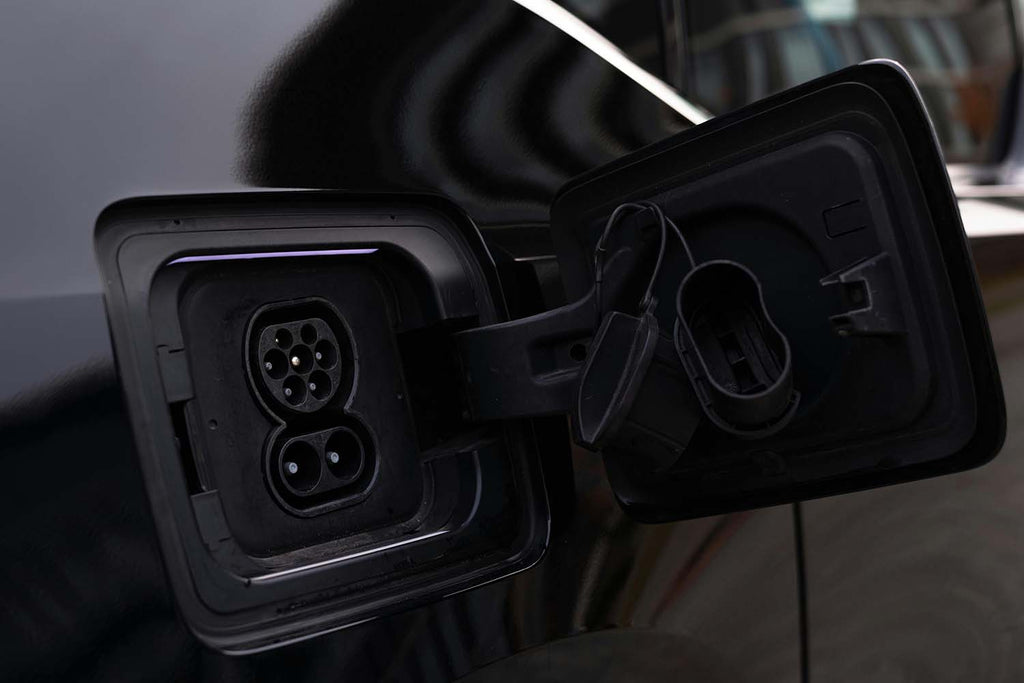
Is there a fixed charging cable at all charging stations?
On fast and lightning chargers, there is always a fixed charging cable with either a CCS2 or/and CHAdeMO plug. This is also called DC charging . The picture below shows Tesla's SuperChargers with fixed charging cable and CCS 2 plug.
At charging stations intended for normal charging, also called destination charging (AC charging), you usually have to bring your own charging cable ( Type 2 ). Older cars (before 2018) have type 1 input and must therefore have a type 2 to type 1 charging cable . This is, for example, in shopping centres, hotels or in places where you park for a long time.

Should one of the pins on the type 2 plug or in the car be shorter than the others?
Yes, the Type 2 plug that goes into the charging box has one shorter pin, namely the CP pin (top right). This is 10mm shorter than the other pins. The same applies to the charging inlet in the car, where CP will be 10 mm shorter than the others (top right).
|
CCS 2 charging inlet on the car |
The type 2 plug (male) that goes into the charging box |
Is it possible to connect two charging cables together?
No, unfortunately that is not possible. Even if the plugs fit together, the charging standard is designed so that two charging cables cannot be spliced / connected together for safety reasons. Thus connecting them in series / spliced charging cables in series will not work.

Is it possible to overload a charging cable?
No, that is not possible. Every charging cable is "marked" so that the charging box will never give out more current than the charging cable is approved for. Therefore, we generally recommend 22 kW charging cables , as they are universal.

Can I use a 1-phase charging cable on a 3-phase charging box?
Yes, it's going just fine. You will get max 1-phase charging. And if you use a 3-phase charging cable on a 1-phase charging box, you still only get 1-phase charging. This is explained in more detail in our charging guide .

Is there something I should think about before buying a charging cable?
Yes, it's good to be aware that there are different contacts / connections on older ( type 1 ) and newer cars ( type 2 ). It is not difficult to find out which type suits your car, as the shape of these two is different. The pictures below show the type 1 and type 2 plug that goes towards the car.
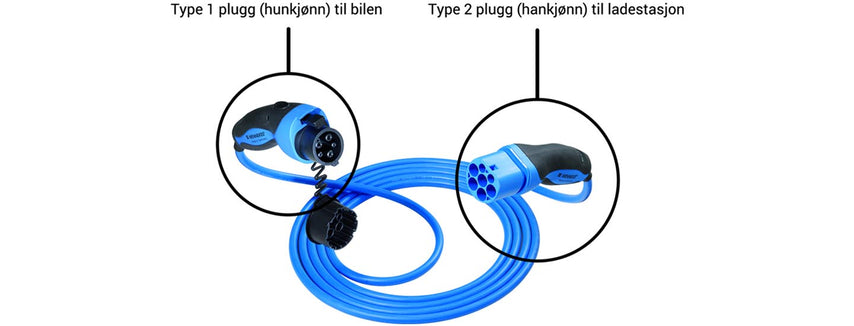 |
 |
It is recommended that you check that the charging cable and plugs are flame retardant and that it has a minimum protection of IP44 or more.
The last thing you should check is how long the cable you actually need. It is recommended that you take a few extra metres, especially in view of winter and plow edges outdoors. A longer cable could also reach several cars without having to move the cars. We have lengths from 2.5 to 25 meters so that it is easy to find a length that suits you.
Is there a difference in charging cables?
Yes, there is a big difference between charging cables and price is one indicator of this. It is about quality, components and fire safety. Some less expensive cables cannot withstand the same stresses and we recommend flame-retardant PUR/TPE cables. Another factor that differentiates charging cables lies in the contact points in the plugs on the charging cable.
Is it manually or machine terminated? Soldered or are there screw connections in the plugs? Cables that are soldered have the best contact surface compared, for example, to manual termination with pliers.
Are the plugs filled with resin / epoxy or is it two-part with screws? If the plug is filled with resin, there are no moving parts in the plugs, nor any moisture that can penetrate the plug. This means that it will last significantly longer. On cheaper variants, dirt and moisture can penetrate, and this can cause the charging cable to stop working.
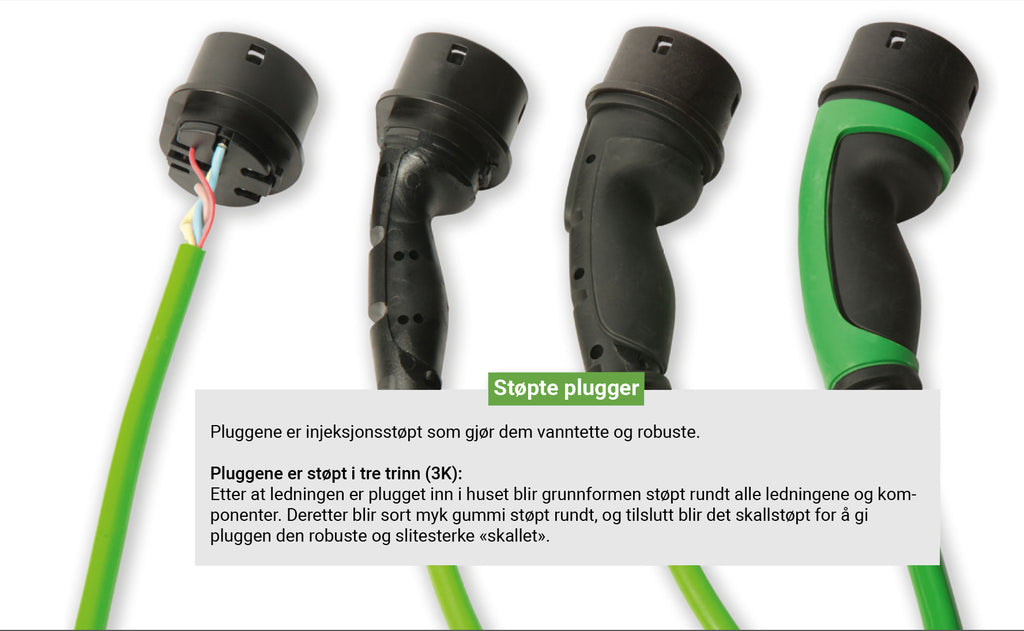
How is the plug coded? Is it a freestanding terminated resistor or is it soldered on? More expensive charging cables have the resistance value soldered onto a PCB board so that it is stable.
How much movement can the charging cable withstand? When moving, you can get fatigue breaks and wear, and then the charging cable becomes useless. You often take it in and out, so there is a lot of movement on the cable. The signal conductor (CP) is often the one that normally gets a break in the conductor. Charging cables have different numbers of signal conductors and their cross-sections, and this is one important factor that affects the lifetime of the charging cable.
 FedEx delivery in the EU
FedEx delivery in the EU

